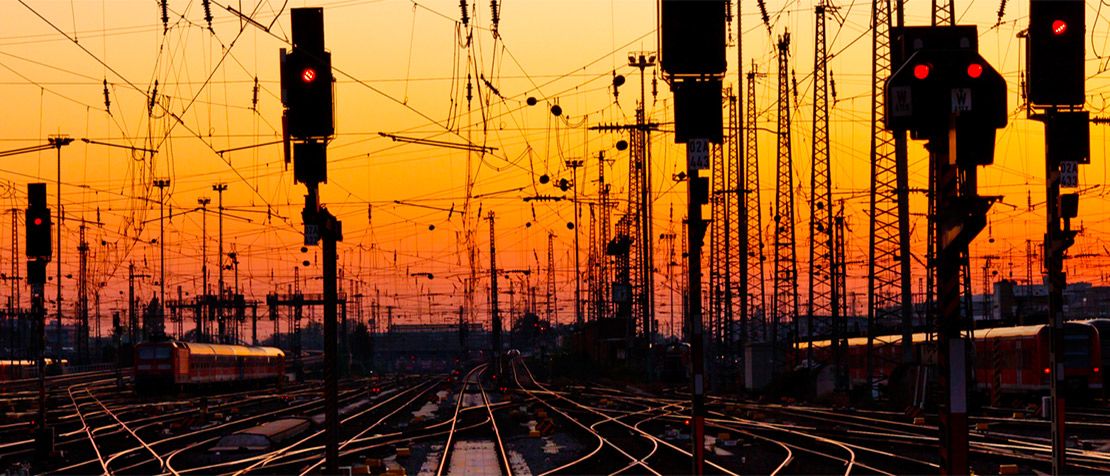
A revolution in railway communication
Today’s constantly increasing individual traffic and the threatening traffic collapse and climate change, are forcing more and more governments to look for alternative transport options. Shifting traffic from the road to the railways is the way out, as rail transport systems are by far the most environmentally-friendly means of transport.
Four categories of railway communication applications
Since the beginning of railway operations, starting with the first steam engines onto todays electrified railway tracks, the need and the demand for communication and signalling between dispatcher and the running train, as also for the communication between dispatcher and dispatcher has increased exponentially. The ITU Radiocommunication Sector (ITU–R) Working Party 5A (WP 5A) has identified four general categories of railway communication applications (see details in Report ITU–R M.2418-0):
- Train radio for voice and data services between the train and the trackside.
- Train remote as an application e.g. of shunting.
- Train surveillance for monitoring of stations, tracks and passengers.
- Train positioning for the exact determination of the actual train position.
In particular, the last one has been and still is an essential element for the safe operation of trains.
The railway sector is facing one of its biggest challenges ever — the revolution in railway communication.
Fail-safe communications
Communication became a not-without-requirement of a railway system to ensure safety of passengers and goods. Signalling and communication between the different parties involved started with simple flags, moving on to trackside signals using a semaphore or light signals to carry the information. Combined with train protection systems operated as an intermitted system or inductive loop system, all kinds of communication systems have to prove their reliability and fail-safe-operation. Some of these train protection systems, date back to the 1920s, and are still in use. However, the trend is to go for higher grades of automation.
In Europe the train management system used today is the ERTMS (European Train Management System). ERTMS is a combination of two elements; a Radio Bearer Service + ETCS (European Train Control system), supporting different levels (1-3) of automation. The radio bearer service used for ERTMS today is the Global System for Mobile Communications — Railway (GSM-R).
Old technology still widely in use
GSM-R is a railway specific derivate of the 2G GSM technology introduced in the late 1990s. While the end of life for GSM-R is expected to be around 2030, GSM-R is still in rollout in Europe. Even old-fashioned analogue radio systems are still widely in use, while in some other regions the trend is moving to mmWave systems to provide high data rates from or towards running trains.
Obsolesce of communication technology — the railway sector’s biggest challenge
With the obsolescence of GSM-R as a technology used for train radio, the railway sector is facing one of its biggest challenges ever — the revolution in railway communication. A key element is the digitization of the railway sector, with a move from circuit switched based communication systems towards IP-based systems, allowing the separation of the transport layer and the application layer.
New radio technologies like 4G or 5G, with their IP-based communication, will pave the way towards systems that allow high reliability, high availability, and radio connections with low latency.
Making use of the new possibilities offered by this technology, together with an increased accuracy of train positioning, automatic train operation (ATO), and remote driving, seem to be in reach in the near future.
A future with automatic train operation
ATO will support different grades of automation (GoA 1-4) where GoA 0 represents todays driver-controlled environment, while GoA 4 will be a completely unattended fully autonomic train drive.
Evolved communication systems will also support the virtual coupling of trains, automatic train assembly of cargo trains, foster real-timeway-side-monitoring, and train positioning. This change will also allow a more flexible train operation system by moving away from fixed blocks, where only one train is allowed at a time, to the creation of a safety zone around the moving train. With such a new system the efficiency of a railway track could be increased.
Implementation of the Internet of things (IoT) with a massive number of sensors along the track and on the train will enable predictive maintenance. But IP-based technologies bar also a risk — a matter of concern is cybersecurity — which will be one of the major challenges for the future.
Increasing demand for passenger services
Besides all the operational communication required, there is also an increasing demand for passenger services like web browsing, streaming services, mobile office or video conferences during their travel. Passengers expect an experience that feels like home while travelling in a train, starting with bandwidth of a few hundred Mbit today ending in the Gbit range in the near future. Ensuring an environment which is free from harmful interference inside and outside the trains will be an additional challenge, in particular when similar technologies are used in adjacent frequencies.
Spectrum — essential for future railway systems
Finally, future railway (communication) systems are not only limited to satisfy the demand of higher efficiency and mobility in the gigabit society, but will also facilitate ambitious climate targets. An essential element to enable these objectives to be attained is spectrum. Criteria such as social, socio-economic and climate-friendly aspects should be taken as a basis for the identification of such sufficient spectrum.
Disclaimer: The views and opinions expressed in this article are those of the author and do not necessarily reflect the views of Deutsche Bahn AG.
*This article is one of a series commissioned for ‘Terrestrial Wireless Communications’ edition of ITU News Magazine. Views expressed do not necessarily reflect those of ITU.
